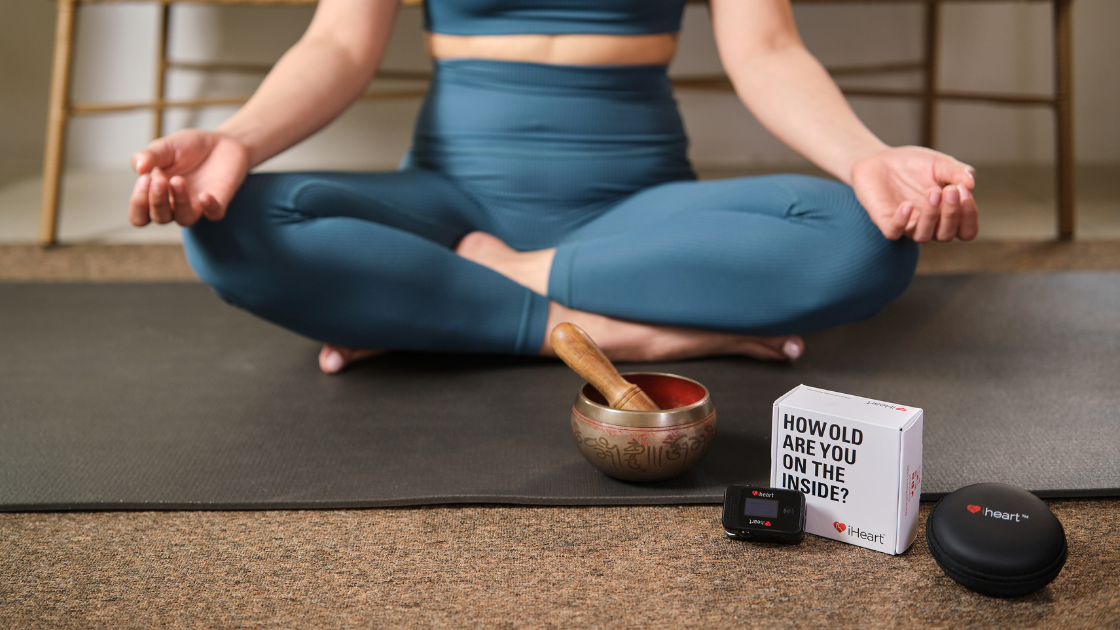Do you agree with the saying, “You’re only as old as you feel”? It’s a popular phrase for a reason. After all, age is only a number, and it doesn’t necessarily paint an accurate picture of our holistic wellbeing. Or does it?
If we could adjust that phrasing slightly, we would say “you’re only as old as you are on the inside.” That’s because your internal age can actually tell us a lot about your overall health, including your risk for life-threatening complications like heart disease.
Our bodies age at different paces. So in that sense, your numerical age isn’t always an accurate predictor of how healthy you and your heart really are. That’s why knowing your internal age – how old you are on the inside – is so important.
Here’s the full scoop on what your internal age means for you, how to find out what it is, and whether you have any control over the numbers.
What’s the link between age and heart health?
If you were to guess what the number one risk for cardiovascular disease is, what would you suspect? Many people assume high blood pressure, genetics, obesity, or smoking are the major culprits. While these are all proven factors of increased cardiovascular disease risk, none of them are the leading risk factor.
The top risk factor for cardiovascular disease is age. Even if we manage to avoid all other causes of death, we will all die of cardiovascular disease eventually, thanks to the inevitable aging process.
If a person in their 20s had all the other risk factors listed above, they might still manage to avoid all the common cardiovascular diseases thanks to their youth. On the other hand, someone in their seventies could be free of those cardiovascular risks, and still have a higher chance of having a stroke or cardiac arrest. But the more risk factors you have, the more you increase your chances of having cardiovascular disease earlier in life. And the risk grows with each passing year.

Why does my risk for heart disease increase with age?
When we think about aging and its effect on our cardiovascular system, we often assume the main consequence is plaque buildup in our arteries (atherosclerosis), which can lead to heart attacks and stroke. While this is certainly part of the equation, an often-overlooked aspect of the function of our cardiovascular system is the health of our aorta.
A quick refresher: your aorta is the largest artery in your body. As you breathe, it flexes along with your spine. It is also the structure that, with each breath, transports your body's nutrient-rich blood to the rest of your organs and body parts.
As we age, our aortas naturally stiffen, which compromises both the heart’s structure and function. Aortic stiffness is a significant cause of high blood pressure in elderly people and often precedes atherosclerosis. A stiff aorta can also lead to other serious health problems, including dementia, stroke, damage to the kidneys and other organs, and is even a risk factor for all biological causes of death.¹
Everyone’s aorta stiffens as they age. But the speed and degree to which they stiffen varies widely from person to person. That’s why the level of an aorta’s stiffness is a key predictor in determining the likelihood and timing of developing cardiovascular disease. By accurately measuring a person’s level of aortic stiffness, we can calculate their internal age.
Can I lower my internal age?
Regardless of how old you are, you could be increasing or decreasing your risk for cardiovascular disease simply based on your lifestyle. The good news is, aortic stiffness can actually be reversed, effectively lowering your internal age!
By making positive lifestyle adjustments like exercising more regularly, practicing diaphragmatic breathing, eating healthier, and managing stress, you can improve the flexibility of your aorta, spine, and internal organs – something we call internal mobility.
Internal mobility is the opposite of aortic stiffness. Put simply, it promotes longevity by protecting you from cardiovascular disease, cognitive decline, and cellular death. Read more about internal mobility and how to improve it in our internal mobility blog post.
The greater your internal mobility, the lower your internal age will be.

How do I find out my internal age?
Until recently, calculating aortic stiffness was a time-consuming and expensive procedure that could only be performed by a technician. Even most doctors didn’t have immediate access to that technology. Thankfully, that’s no longer the case. With the iheart Device and Internal Age App, you can find out your internal age at home with quick, accurate readings.
The iheart Device is a fingertip oximeter that can be paired with the iheart Internal Age App to find out how well you’re really doing on the inside. By taking regular readings, you can even see how lifestyle changes and modified behaviours affect your scores, day-by-day.
How does iheart Internal Age work?
Iheart Internal Age works by determining your Aortic Pulse Wave Velocity, an accurate measure of aortic stiffness, and comparing the result to a graph of typical healthy readings per age.
We recommend taking a daily baseline reading under the same circumstances (i.e., right after waking up and before having anything to eat or drink) in order to produce consistent recordings. Exercise, stress, diet, and other factors all have an impact on internal age, and over time this your initial reading will change in response to your lifestyle.

I know my internal age – what next?
Finding out your internal age gives you a clear starting point to begin making small, everyday modifications to your habits and lifestyle. By taking regular readings, you can see how these changes affect your scores in real-time. Then, as you track your progress and find the motivation to stay consistent in your health-boosting behaviours, you can actually reverse your aortic stiffness and ultimately lower your internal age.
By sharing your internal age readings with your healthcare practitioner, you could work together on creating a plan to help you lower your scores. Paired with our free-to-download apps, the iheart Device even records your progress and lets you share your readings remotely with your practitioner.
For simple tips anyone can do to begin lowering their internal age, download our free eBook How to Lower Your Internal Age.
Ready to find out your internal age?
Sources






Share:
What is Internal Mobility?